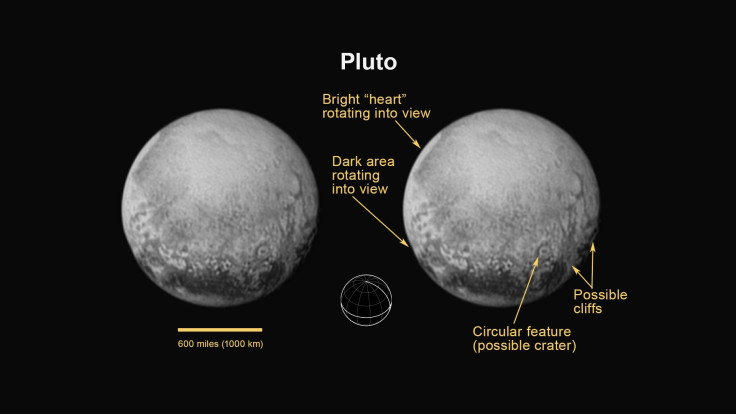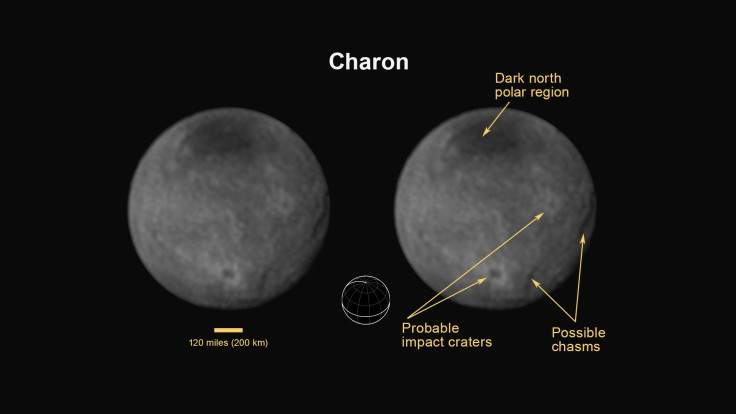Pluto New Horizons Flyby Live Stream: Watch The NASA Close Approach Of The Dwarf Planet Here

NASA will finally get to complete its solar system passport Tuesday with the New Horizons flyby of Pluto. The dwarf planet was the only planet -- Pluto was still a planet when New Horizons launched in 2006 -- yet to be observed by a spacecraft. NASA will have a live stream of the historic Pluto close approach beginning at 7:30 a.m. EDT Tuesday.
Thinking of the solar system, we can picture each planet easily due to the numerous spacecraft that have orbited these objects. Every planet has been explored and most of those photos that have been beamed back to Earth are iconic and have become a part of our culture. Jupiter's Great Red Spot; Saturn's rings and moons; Mars' distinct red hue; and the rich blue of Neptune are just a few images that come to mind when we think about our solar system.

As for Pluto, the best image of the dwarf planet comes from the Hubble Space Telescope. The photo is impressive because it's of an object that's close to 5 billion miles from Earth, but Hubble can take photos of galaxies that are light years from Earth. There are plenty of reasons for that -- including the ratio between the two objects, Pluto's size and Hubble's camera -- as Planetary Resources explained.
Even that blurry photo has shed light on what's going on in Pluto. There's ice on the dwarf planet's poles, atmospheric changes and seasons. There's even a bright spot of carbon monoxide frost that will be investigated by New Horizons.
NASA's New Horizons mission began its life as a New Frontiers program in 2001, but didn't get the necessary funding and traction until 2003. New Horizons was pitched as a Kuiper Belt Pluto Explorer program and launched in 2006. It's the first mission to the study a Kuiper Belt Object and the first to study Pluto in detail. New Horizons will also help distinguish the relationship between Pluto and Charon as it could be redefined as a double planet -- Charon is half the size of Pluto and the known moons orbit the common center of mass of these objects.

The New Horizons spacecraft is equipped with seven scientific instruments that will produce thermal maps, analyze the atmosphere of Pluto and Charon, measure Pluto's interaction with solar wind and how much plasma escapes the dwarf planet's atmosphere. Prior to Tuesday, New Horizons has been redefining our knowledge of Pluto and has been delivering incredible images of the dwarf Planet and Charon. There's a heart on Pluto's surface and possible cliffs and craters on the dwarf planet.

New Horizons has even settled the debate about just how big Pluto is before Tuesday. Pluto is larger than expected -- 1,473 miles in diameter -- and is king of the dwarf planets. Eris is now the second-largest object in the solar system beyond Neptune with a size of 1,445 miles in diameter. This measurement also has ramifications for the amount of ice on Pluto, slightly more, its atmosphere, the lowest layer -- known as the troposphere -- is shallower and its density is lower than previously expected.
New Horizons' Long Range Reconnaissance Imager also measured the size of Pluto's moons Nix (20 miles in diameter) and Hydra (40 miles in diameter).
At its closest approach, New Horizons will be 7,750 miles from Pluto. The spacecraft will be traveling at a speed of 30,800 miles per hour during its Tuesday flyby. After a summer at the Pluto system, NASA officials will determine which Kuiper Belt Object the spacecraft will study next as part of its extended mission.
The NASA New Horizons Pluto live stream begins at 7:30 a.m. EDT and the close approach occurs at 7:49 a.m. EDT. New Horizons will be out of contact after the flyby and NASA will receive confirmation of a successful close approach at 9:02 p.m. EDT Tuesday.
© Copyright IBTimes 2025. All rights reserved.





















